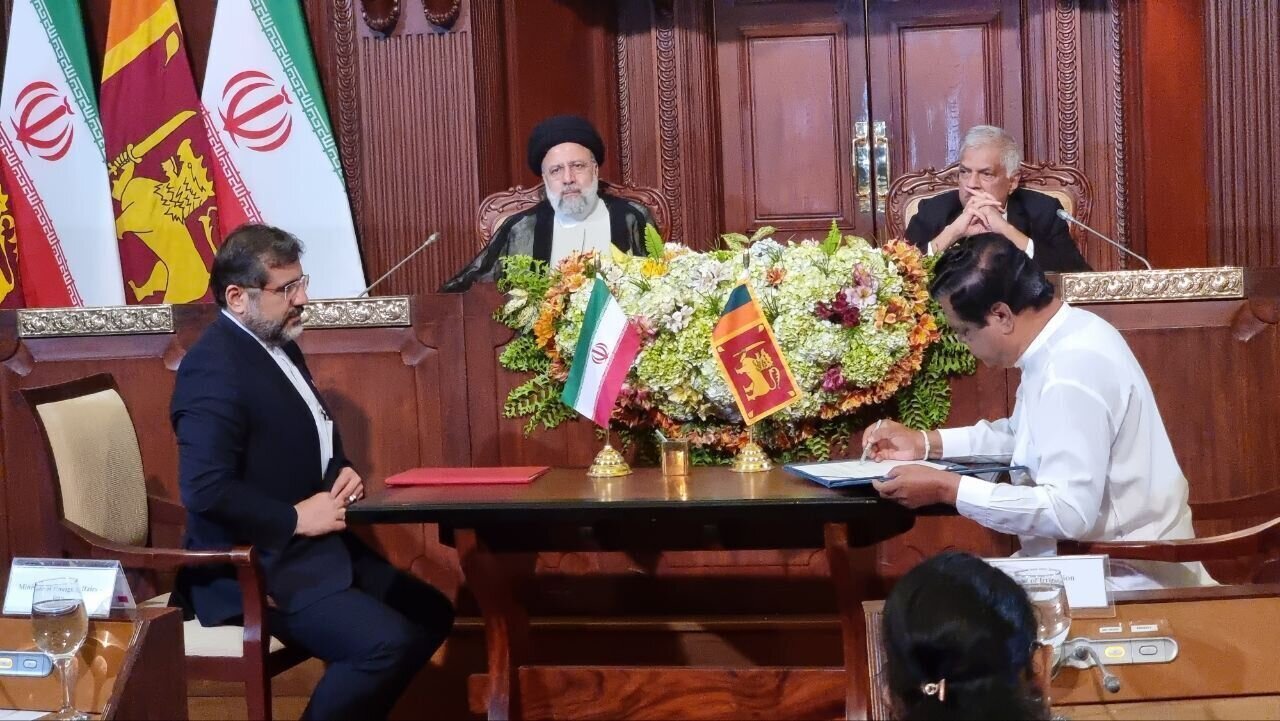Iran, Sri Lanka ink 5 cooperation documents

TEHRAN – Senior officials of Iran and Sri Lanka have signed five cooperation documents in the various fields in the presence of Iranian President Ebrahim Raisi and his Sri Lankan counterpart Ranil Wickremesinghe.
President Raisi arrived in Sri Lanka on Wednesday on the second leg of his regional tour, which took him to Pakistan earlier, IRNA reported.
In continuation of the visit by President Raisi and the high-ranking political and economic delegation accompanying him to Sri Lanka, five cooperation documents were signed between the two countries in the fields of culture, cinema, tourism, and science and technology.
Earlier on Wednesday, President Raisi said the Islamic Republic of Iran is ready to assist Sri Lanka on the path of progress.
Raisi made the remarks at the inauguration ceremony of the Uma Oya Multipurpose Project, one of the largest irrigation projects in Sri Lanka, on Wednesday.
“What is more important than the inauguration of the project is the realization of the concerted efforts of the two countries that are seeking to enhance the well-being of their nations further,” he said.
The project manifested the solidarity between the two Asian countries, he further noted.
Raisi voiced Iran’s readiness to share with Sri Lanka the knowledge of its scientists from 45 years of experience.
Terming Sri Lanka as an independent country, he said the expansion of bilateral ties could bring about a bright future for both sides.
The Islamic Republic, with its technical and engineering capabilities, is carrying out large electricity and water projects in over 20 countries, he noted.
The Uma Oya Multipurpose Project, implemented through the collaboration of Iranian experts, aims to alleviate water scarcity in the southeastern region of Sri Lanka by redirecting an annual average of 145 million cubic meters of excess water from the Uma Oya basin to the Kirindi Oya basin.
The project is located in southeastern Sri Lanka, 200 kilometers east of the capital Colombo, in a relatively deprived and arid region.
It includes the construction of two dams, a water transmission tunnel, and two 60-MW underground hydroelectric power plants.
EF/
